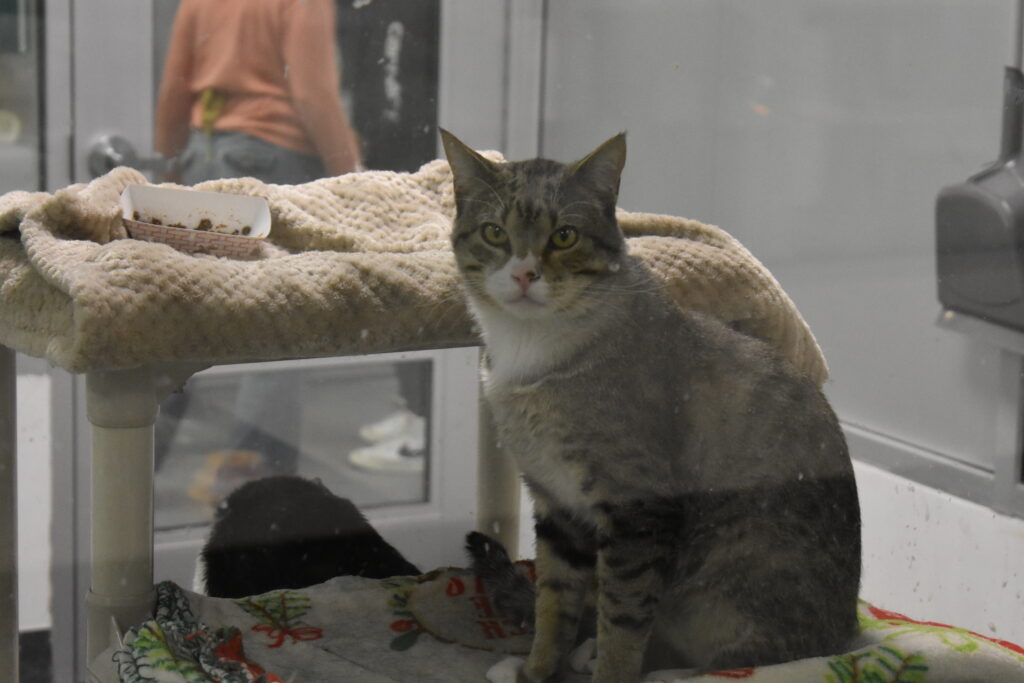By: Soroi Jones/ New Mexico News Port
Animal shelters in New Mexico are struggling to keep up with large pet populations. The struggle has carried on for at least a decade.

Ivory Garcia, a pet counselor at the Eastside Animal Shelter of Albuquerque, said that excessive breeding was a major problem for their shelter coming out of quarantine– and the problem has persisted ever since.
“We keep getting huge imports of puppies and kittens this year,” Garcia said. “We had a very long puppy season and a very long kitten season.”
Out of tens of thousands of pets, over 135,000 animals are housed in shelters every year, according to Animal Protection New Mexico. But, according to APNM, over half of them are euthanized due to a lack of homes.
“Even after reaching shelters, the vast majority cannot be saved,” the website writes. “The irony, of course, is that overpopulation can be prevented.”
APNM’s website states that there are a few key issues that face the animals of New Mexico: excessive breeding, unwanted animals, and purchases of pets from pet shops and animal breeders instead of reputable shelters and rescue organizations.
Some shelters try to offer quality-of-life conditions to the pets, sometimes at certain costs to their facilities.
“Once we hit capacity we have to decline transports and surrenders,” Sara Heffern, executive director of the Watermelon Mountain Ranch, New Mexico’s largest no-kill shelter, wrote.
On the other hand, Barbara Bayer of Companion Animal Rescue and Medical Assistance says that their status as a cage-free shelter allows them to take in emergency pets in some cases.
“Because we are cage-free, we usually can figure out a way to add one more in an emergency, but we have to have a space in which to introduce the new animal,” Bayer wrote. “In addition, we always take back our animals if they are returned.”
Shannon Kmatz, president of the Homeless Animal Rescue Team of New Mexico, has worked to do as much as she can for New Mexico’s animal health troubles.
“Our focus is on the welfare of the animal,” Kmatz said. “Not on the adopter.”
HART addresses many problems at once, providing benefits such as healthcare, financial aid for pet owners, and spay-and-neuter programs. They work inside and outside of their county to bring those benefits to people (and pets) in need. Their mission is to keep “all eyes on all animals at all times.”
Bayer describes pet overpopulation as an “epidemic.” Bayer and Kmatz lamented a lack of funding for their programs, underlining ongoing struggles to keep up with the steep costs of animal welfare and healthcare.
“There is not a good long-term solution… Until there is a good option for the general public to have their pets spayed/neutered, this will continue,” Bayer wrote.
Finally, Kmatz stresses the importance of volunteering and that there are many different ways to help out, inside and outside of the clinic.
“We’ve been working for the past 20 years on a reactive model, which is ‘foster, foster, foster’, but my fosters are tired.” She said. “We need volunteers to walk dogs to socialize animals (and) help at adoption events.”
However, she says that at the end of the day, the key is to know how you can help with your own pets.
“The biggest thing is, we need people to take responsibility for the animals they have,” Kmatz said.“Get ‘em vaccinated, and get ‘em spayed and neutered.”